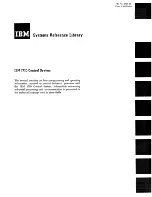
Use and Maintenance Manual – Pressure-sensitive bumpers type GSBPS
5/35
The testing procedure is to be carried out while installing the device and after each maintenance or
adjustment operation carried out on the machine. The correct testing procedure is described in this
Manual.
All electrical wirings are to be carried out and installed in compliance with the existing regulations
and electrical local Standards.
The user must follow all procedures described in this manual so to ensure the correct use of the
pressure-sensitive bumpers type
GSBPS01, GSBPS02 and GSBPS03, in conjunction with the
control units type GP02/E or GP02R.T.
The employer is responsible for the selection and training of the personnel charged with the
installation, use and maintenance of the machine and its relevant safety system. It is mandatory for
the user of the machine to report all and any malfunctioning of the machine, tools and safety
devices. DO NOT put the machine into operation if the safety device is not working correctly.
2.1
Improper use
THE BUMPER AND THE CONTROL UNIT SHALL NOT BE USED:
In control circuits and equipment featuring inadequate stop time or inadequate control
instruments/mechanisms.
In environments which can adversely affect the correct working of the bumper and/or of the control unit
(i.e.: environments with the presence of chemical, corrosive agents).
To start the machine movement.
In environments where there is a risk of explosion or a risk of flood (where devices risk to be covered
with water).
In places where there is the passage of heavy means (forklift trucks, motor vehicles and similar ones).
Beyond the use and storage temperature limits.
In applications where finger detection is required.
2.2
Environmental limits
The material of the sensor can resist the deteriorative effects of ozone, sun rays, water, acids, bases, oily
liquids, fats. Hydraulic oils and cutting oils do not cause any damage.
Very aggressive liquids such as phosphoric acid, nitric acid, Freon, etc… can cause the deformation and the
loss of the material characteristics. The exposure to very high temperatures damages the product (the
product should be stocked at a temperature in the range -10 and +50°C).






































